Menus
- The race of the two-cylinder: Guzzi, Laverda and Ducati in comparison
- Laverda 750 SF
- Moto Guzzi 750 S.
- Ducati 750 Sport
- Driving characteristics of the three two-cylinder
- Technical specifications
- Opinions
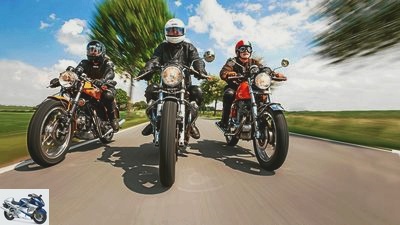
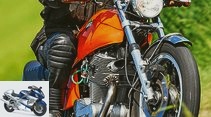
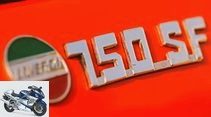
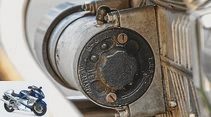

29 photos
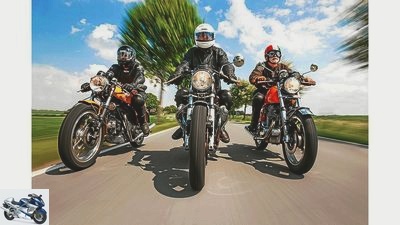
1/29
Twin and away: the Ducati 750 Sport, Laverda 750 SF and Moto Guzzi 750 S in a comparison test.
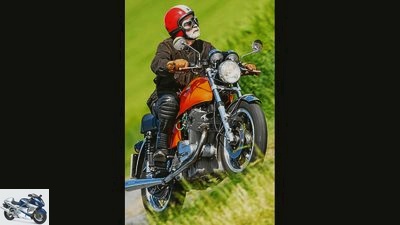
2/29
Its weight and the high center of gravity take some getting used to, but then the 750 SF hisses safely and purposefully through all kinds of corners.
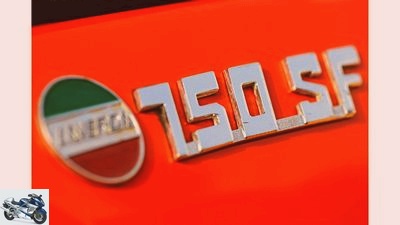
3/29
Laverda 750 SF.
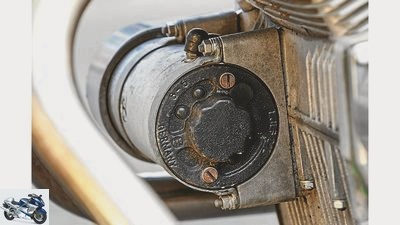
4/29
Like many other components, the alternator was not bought in Italy. It comes from Bosch and is driven by a V-belt.
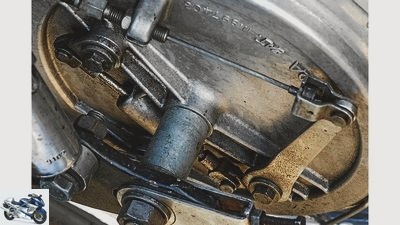
5/29
A duplex brake patented by Laverda acts in the rear wheel and complements the effective front double disc brake very well.
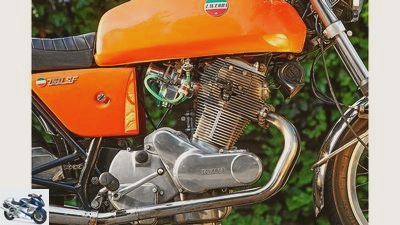
6/29
Thanks to the upstream alternator, the load-bearing ohc-Twin is not particularly wide. But at over 80 kilos it was particularly heavy.
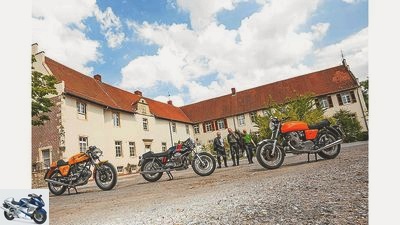
7/29
In the past, trips with these Italo athletes usually ended at the Nurburgring. Today it can also be a little castle.
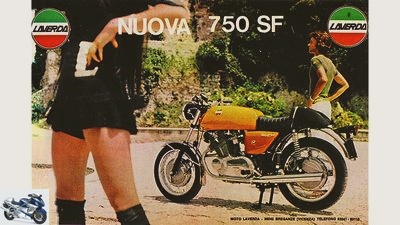
8/29
Massimo Laverda mistrusted local products and bought from Nippon Denso.
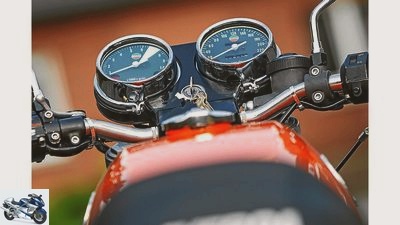
9/29
The instruments sound familiar? No wonder, because Massimo Laverda went shopping at Nippon Denso.
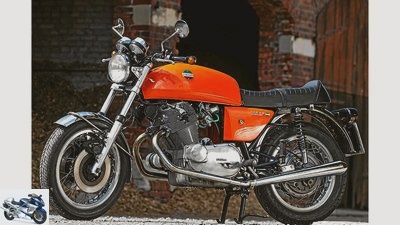
10/29
She defines sport more in the British way, but with a solid ohc twin.
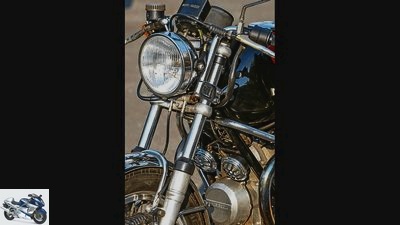
11/29
Although expensive parts should be saved, the adjustable gooseneck handlebar from the V7 Sport to the 750 S was able to save itself.
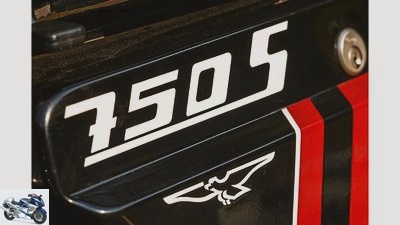
12/29
An elegant and consistent design philosophy from de Tomaso.
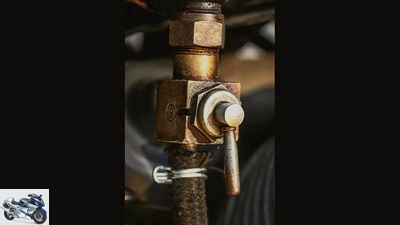
13/29
Despite de Tomaso’s design philosophy, there is nothing else on the 750 S that is as angular as its petrol taps.
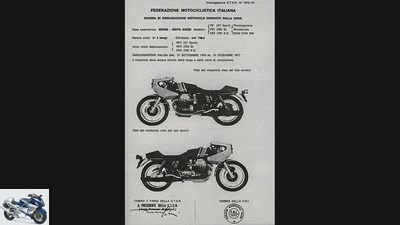
14/29
Just once more lucky: The 750 S was originally homologated with this misshapen half-shell.
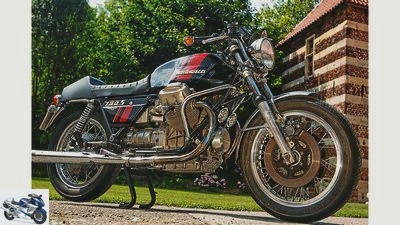
15/29
The Moto Guzzi 750 S in all its glory.
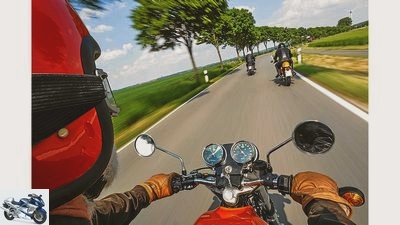
16/29
The Laverda with its hard chassis prefers smooth asphalt, Guzzi and Ducati retain more dignity on wavy surfaces.
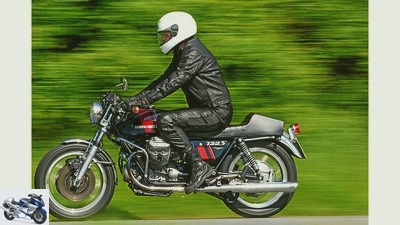
17/29
From the fork to the cardan, everything looks very robust and inspires confidence. This can also be done quickly.
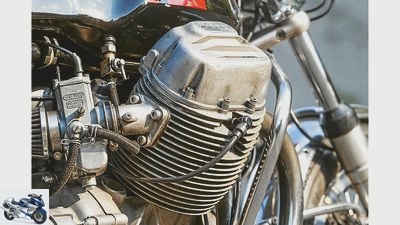
18/29
The 750 S has an airbox as standard, but without a filter element. This is the other way around. The rectangular slides of the Dellortos can be opened very easily and predictably.
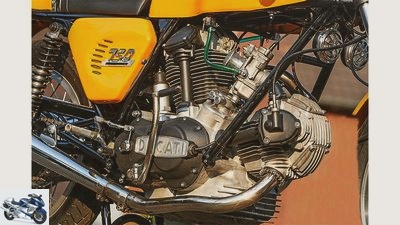
19/29
The engine is sheer mechanical poetry – ingenious.
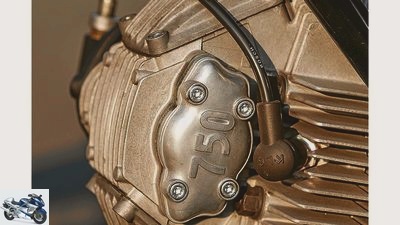
20/29
Taglioni himself could hardly believe that he had wrested such a large engine from the bosses, and so announced it in writing on every cylinder head.
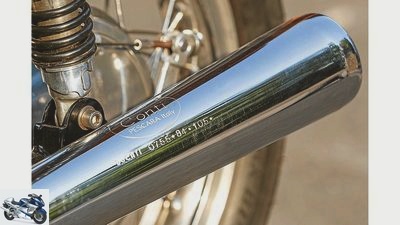
21/29
Permissive Conti bags shape the sound experience of the Ducati 750 Sport.
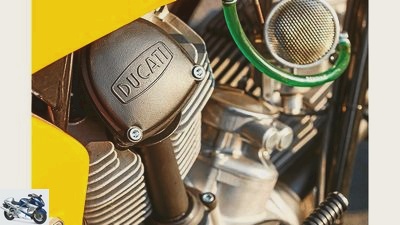
22/29
The sound experience is shaped by the open intake funnel, as is the fine whirring and grinding of the many bevel gears.
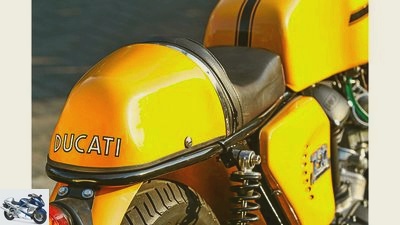
23/29
With the sport, the name said it all. In the beginning they were only available with a one-man hump seat, handlebar stumps and set back footrests.
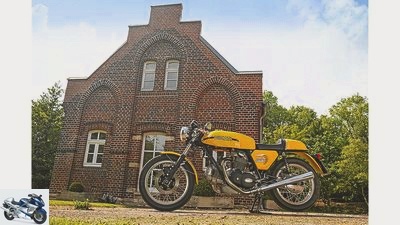
24/29
The side covers of the engine and the housings of vertical shafts and bevel gears shimmer in matt black on the Sport.

25/29
It was a beautiful day, with three very different characters, marked by pithy tones and a robust sportsmanship.
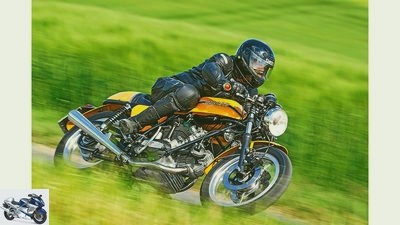
26/29
The Ducati 750 Sport is good in the curve.
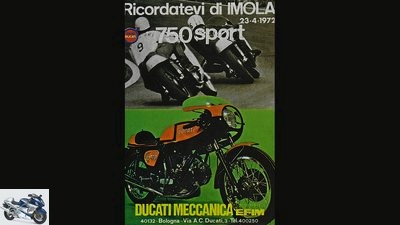
27/29
When the sport came in 1972, initially with a curious half shell, Paul Smart and Bruno Spaggiari had already struck in Imola.
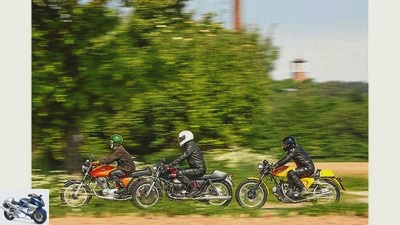
28/29
The light Duc is not really smaller than the Guzzi with its massive engine, the Laverda with its twin row towers a little over both.
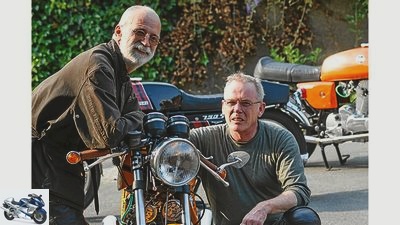
29/29
Michael Nitzsche (left) runs a motorcycle shop in Dorsten-Wulfen (www.italomotos.de), in which he has also dedicated himself to Italian classics and young timers for years.
Ducati 750 Sport, Laverda 750 SF and Moto Guzzi 750 S in comparison test
The race of the two-cylinder: Guzzi, Laverda and Ducati in comparison
Content of
Moto Guzzi 750 S, Laverda 750 SF and Ducati 750 Sport scored points in the mid-1970s with their charismatic two-cylinder engines and track-stable chassis.
It’s just stupid to let the market take care of everything. Anyone who has not yet understood this using the example of water money or apartment rents may be convinced by the sad fact that certain Italian motorcycles are far too rare today. Forty years ago it was well known how popular with Moto Guzzi, Laverda and Ducati Gwas tested and tinkered with and how unpopular things like logistics, sales and spare parts supply were there. But instead of intervening to help, one watched (the Italian government, the EU, the Pope, the motorcycle god …) the Ingegneri inactive, while four all-devouring motorcycle empires emerged at the other end of the world. They threw around with four-cylinders, installed a dealer on every corner and lured people with low prices.
Buy complete article
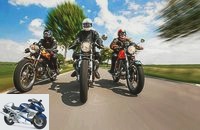
Ducati 750 Sport, Laverda 750 SF and Moto Guzzi 750 S in comparison test
The race of the two-cylinder: Guzzi, Laverda and Ducati in comparison
750 SF and a Moto Guzzi 750 S crackle during the last rest of an edifying full-day excursion, each of these classics could not only be moved, but also challenged. Although the area around Dorsten is not necessarily famous for its hairpin bends, there are normal curves – always fast – and tricky road conditions between the Lower Rhine and Munsterland. In any case, enough to grasp with startling intensity how much more stable and precise the chassis of Italian motorcycles were. One should have known back then. Stupid market.
Laverda 750 SF
The Laverda 750 SF defines sport more in the British way, but with a solid ohc twin.
But enough of the system-critical thoughts, we just have to live with the fact that only around 1000 Moto Guzzi 750 S and not 3000 Ducati 750 Sport were built. With a total of over 10,000 units comes the Laverda 750 SF almost like a volume model, which of course is also due to the long production period. From 1970 to 1975 it rolled off the assembly line in Breganze as a sporty offshoot of the less popular touring variant, its roots going back to the mid-1960s. At that time, a vision drove the young Massimo Laverda around the world: In the USA he had admired the successes of the Japanese, especially with large motorcycles. And the trend was towards more and more cubic capacity. A 650, so his plan, should give the small Italian family business part of the cake, was presented in London as early as 1966.
The 305 cm³ engine of the Honda CB 77 served the Laverda 750 SF as a blueprint, Laverda never denied that; a counter-rotating ohc parallel twin. The Laverda interpretation has a horizontally divided housing, the primary drive to the five-speed gearbox is via a triplex chain, an alternator driven by V-belt sits in front of the crankcase, and an electric starter behind the cylinder bank. The engine hangs in a supporting structure in a tubular steel bridge frame, which helps it to be in an elevated position and noticeably drives the center of gravity upwards. The whole motorcycle looks very solid and benefits from the well-known high level of craftsmanship and the great vertical range of manufacture of the house.
Massimo Laverda was considered to be a busy spirit, and the enthusiast, who died in October 2005, constantly thought about improving his beloved motorcycles. Even before the start of its career, the 650 series had to undergo a radical operation that turned its engine from counter-to-run. Its characteristics correspond to those of the big British twins, but thanks to its stiff crankshaft with five bearings, it clearly outperforms the scrap iron from the island in terms of durability and vibration behavior.
At the same time, Laverda recognized that displacement was becoming the most important selling point and got a 750 version up and running. Both went into production in parallel in 1968, from 1969 only the 750 series was available, with a sporty 750 S to the side. A year later, Laverda derived the first SF from this, the Super Freni. With super brakes, and that’s what company patron Francesco contributed. Although Massimo’s father had spoken out against the construction of such a large motorcycle, he could no longer watch how delivery problems kept hampering the surprising success of the Twin – especially in the USA. So his Super Freni replaced the previous Grimeca stopper. The SF also retained its name when it was finally converted from drum to Brembo disc brakes in 1973.
The brake system is still convincing with good controllability and calming deceleration, is an inconspicuous part of an overall very convincing and occasionally sensational appearance. It starts with a reliable cold start. At the push of a button – the 750 does not have a kick starter. Retrofitted open air funnels lead one to expect that the SF sounds more evil than it looks. But then that, this flawless co-running melody, performed so naturally and brutally that you almost get scared. English Crossers with Triumph-Twin send their regards, but where they bark poisonously upstairs, the Laverda only sounds a bit lighter. Irresistible, nothing to shake. The engine, fed by the 36-series Dellortos, accelerates well below 2000 rpm, and just above it it really accelerates. If you turn over 5500 rpm, you gain little time, give away a lot of sound and then reap a significant tingling sensation in the handlebar ends and footrests. The crisp and precise transmission provides excellent assistance, but if you like, you can do almost everything on the country road in the last two gears.
At least around Dorsten. There the many pounds of the SF are less noticeable, which obviously pay off in a high degree of solidity, but impair the handling – especially when shifting in alternating curves. Those responsible must have known about it, why else does your sporty model have such a wide series handlebar? But of course the Laverda only shocks during the acclimatization phase, at some point it is simply pressed so hard until the direction is right. Always trusting the board-hard, but stable and torsion-free chassis and the grip of today’s tires.
Moto Guzzi 750 S.
From the fork to the cardan, everything looks very robust and inspires confidence. This can also be done quickly.
Contact with the is even more harmonious Moto Guzzi 750 S.. The hands fall naturally on the two halves of the adjustable gooseneck handlebar, and the lower extremities are not placed too sportily either. The tilt choke is turned on, the button is pressed – the V2 installed lengthways pounds off. This one has over 80,000 kilometers on the clock and has just been completely freshened up. For the next 80,000, that’s what sport exudes with every expression of life. It works its way through the rev range without undue haste, has a significantly longer gear ratio than the Laverda, but also gains profitably above 5500 tours. And bang, you’re already scratching the illegal area – sonorous soundscape and sovereign roadholding make you forget time, space and speed.
What on earth did company director Alessandro de Tomaso ride when he almost condemned this wonderful motorcycle to extinction? Within his motorcycle empire, most of the development funds went to Benelli, where the 750 series and its four-cylinder sister models were just getting started. On Lake Como, on the other hand, Lino Tonti bit into the drawing board instead of being allowed to develop his V7 Sport further. Then finally the permit came. But half-heartedly: The already finished 850 was not allowed to move into the unchanged frame taken over from the V7 Sport, no, it should remain with the 750. Recycling? Indifference? It is not known what induced de Tomaso to set these specifications for the Moto Guzzi 750 S. In any case, Tonti was sure that his boss didn’t like sporty Guzzis.
On the other hand, you also have to understand the company leader: At that time, bumper-controlled two-cylinder engines definitely no longer seemed to have a sporty future, something that was also shown by sport with production motorcycles. The amazing, but hardly world-shaking successes of the V7 Sport on the slopes were a few years ago and could no longer be marketed. Almost all customers based their purchase decision on the performance of Japanese four-cylinder engines. The time was simply not yet ripe for a conscious renunciation of horsepower in favor of cultivated country road pleasure. Such simple, but maintenance-friendly constructions were much more likely to score points as travel companions, and in fact the Guzzi-scale T3 and T3 California, which were sold from 1974, are considered to be successful models.
Only 700 customers subscribed to one in 1974, the first year of sales Moto Guzzi 750 S. happy, mostly in the traditional European countries of Italy, Holland, Germany and Great Britain. The Americans hesitated and preferred to keep the V7 Sport, which is why the S exported there were renamed. That was not really a misnomer, because apart from an improved gearbox and a few other life-extending measures, the two motorcycles were technically identical. Even the double disc brakes had already existed on some late V7 Sport. Then there were changed instrument consoles on them, black paint spread over the two Silentium mufflers and a few style-defining peculiarities. First, namely a bench for 1.5 people; consequently the S has passenger pegs. In addition, the two striking colored stripes in red, green or orange are painted on the basically black tank and the side cover.
Once again, Italian designers created classic shapes with a light hand, aided, of course, by de Tomaso’s focus on Benelli. There he went with all his might on rough edges, while large Guzzi were allowed to stay completely round until Le Mans and were later used as style templates by Moto Guzzi themselves: the V7 Sport in some V11s from the 1990s, the T3 California in the current Cali and the 750 S for the 1000 S commissioned by the German importer in 1990, but shapes alone do not make a classic. The sporty Guzzi rather stand for an honest and brave sporting spirit, characterized by the robust engine and a chassis that was one of the very best of the time. It doesn’t lean on its own, but it only needs a little help to turn in very predictably and smoothly and then to stay on course. Guzzi’s own cartridge fork works properly, above all it can take a lot even on poor surfaces without trampling or even moving. There is only a short spring travel available at the rear, but the struts make the best of it; a BMW with cardan shafts is much more comfortable, but the chain Laverda that is traveling with you is much harder.
The Twins from Laverda and BMW also serve as a comparison when it comes to the qualities of the 750 Guzzi engine. A good BMW R 75/7, not to mention a 60 hp R 100, can easily keep up on normal country roads, even the nominally 60 hp Laverda 750 SF has no need. The Moto Guzzi 750 S has to give in wherever full torque counts. Although it comes out of the push quite well with a noise that ranges from rattling and slurping to thumping, it only leaves mid-speed slowly in higher gears. Only clearly above 5000 rpm does her sporting spirit wake up again in the fourth or fifth, so she wants to be used carefully with the right gear. On the occasion of the test of the 750 S3, the successor model with the same engine, MOTORRAD noted in issue 5/1976 that the torque development had suffered significantly compared to the V7 Sport. Due to stricter noise laws, Guzzi had to accept a trailer between 3500 and 4500 rpm in order to achieve around 62 hp at 6900 tours in the end. The explanation seems plausible, in any case, these 62 Cavalli must all be canter when the S3 thundered through the light barrier at the Hockenheimring at 205.7 km / h.
Moto Guzzi motorcycles on markt.motorradonline.de
Ducati 750 Sport
The side covers of the engine and the housings of vertical shafts and bevel gears shimmer in matt black on the Sport.
Fabio Taglioni had to make fewer compromises than his colleague from Lake Como when he had his ideas for a sporty two-cylinder in the form of the Ducati 750 Sport was allowed to implement. Firstly, the stricter limit values did not apply at the beginning of the 1970s, and secondly, the Phon measuring devices in Bologna still work differently to this day than anywhere else in the world. In any case, the Conti bags emit an unabashed, deep thud while the 4.5 liters of oil are slowly warming up to minimize friction right up to the top floor of this sacred construction.
Practically parallel to the racing cars with which Paul Smart and Bruno Spaggiari achieved a surprising and superior double victory in the 200 miles of Imola in 1972, the S emerged as an offshoot of the tourist GT. Like them, it has no desmodromic features – the forced control of the valves, so loved by Taglioni, was initially denied to him for cost reasons. Smart and the others had it, of course, with the 750 SS – initially only planned as a small series in memory of the Imola triumph – it also moved into the two-cylinder series.
But back to Ducati 750 Sport. Ducati was not really sure of its own sporting reputation a good 40 years ago. This may be surprising today, but if you look at the model range and sporting activities of that time, you will definitely find an explanation: You fought against the Japanese with pretty and brave single-cylinders, the great road racing took place without Ducati. Consequently, the new two-cylinder was introduced with the touring variant in order to penetrate the most important international segment. But with its powerful engine and, above all, the handy, stable chassis, the GT aroused desires among sporty drivers that no other motorcycle could meet at the time. The boys waited for the S, and the brave traders even more.
Of course, it would never have met Taglioni’s claim to simply clip on handlebar stubs and paint S on the tank. No, apart from the narrow tank and slim seat bench, he had shorter and lighter pistons built in, the connecting rods polished and the crankshaft lighter. The compression increased from 8.5 to 9.2 to one, the airbox was omitted and the carburettors grew – instead of 30 Amal, 32 Dellortos were used. This increased the power by five to 60 hp, and again the MOTORCYCLE measurement can serve as evidence: With its significantly shorter overall gear ratio compared to the Guzzi, the 750 S hissed through the light barrier at 187.5 km / h, which for a maximum of 60 hp speaks.
But it doesn’t matter either, always today. Because today was nothing but a country road, and there the lightest motorcycle of the Italo trio impresses with the most powerful pull. It is completely freshly set up at the specialist Italomotos from – of course – Dorsten-Wulfen. Mechanic Michael Scheidner was able to enjoy the fruits of his work until just now and looks damn happy. Now he has to make room. Far to the back and quite high – the pegs that have been moved back are somewhere where the pillion’s feet rest on the Guzzi. The upper body also has to be bent a little more so that the hands can reach the handlebars. First gear – right foot up. The third switching scheme that day. So then: The clutch is much easier than with the Laverda, engages even more gently than with the Guzzi. Well, very well, the V-Twin even accelerates. Even the first few meters make it clear how much lighter the Duc is than her two companions and how skilfully she has distributed her few pounds. While the Laverda needs to be balanced and the Moto Guzzi is controlled, the 750 S can read minds, it falls so easily in an inclined position.
Light motorcycles quickly appear wobbly, especially if they only have narrow handlebars. Not so the Ducati, which builds confidence in a few corners. Regardless of bumps or asphalt cracks, it follows the chosen line, but still reacts spontaneously to corrections, can be easily braked into curves, and when accelerating it straightens up quickly but not hastily. And it’s handy, as handy as a sporty Duc will probably never have been after her. And that although the fork of the photo model picks up the wheel axle centrally and not, as is usual with the S, in the shots in front of the bars. Despite the resulting longer lag, even tight alternating curves are child’s play. It takes a few kilometers to properly appreciate this compelling performance.
Ducati motorcycles on markt.motorradonline.de
Driving characteristics of the three two-cylinder
In the past, trips with these Italo athletes usually ended at the Nurburgring. Today it can also be a little castle.
Then you get to the point.
To the engine. To the vertical shaft. This is mechanical poetry, so wonderfully senseless and so wonderfully beautiful. Dottore Taglioni had to install nine of his beloved bevel gears until he could get the two overhead camshafts going with an intermediate shaft and one vertical shaft each. It grinds and hums in a very strange way, that could easily worry the inexperienced, but the knowledgeable mechanic is currently following behind. Namely on the Guzzi and applying pressure. Not much longer, because the Duc is clearly superior, especially in the medium speed range. So often the Guzzi driver can’t downshift to stay tuned if the Ducatista just pulls the tap open. The engine then yaws clearly audible and – let’s put it this way – almost foully for air, delivers more power very directly, pushes up and down without vibration. The almost virgin condition of the new build prohibits speed orgies, but this 40-year-old twin also delivers a more than impressive performance up to a good 6000 rpm.
On the last part back, the curves finally come to an end. You can play on the gas and produce fantastic tones. You can also think: Back then there were exciting tests in MOTORRAD, both from the GT and from the sport. The 750 S and 750 SF also got off very well, and from the historical distance we know that our colleagues were right. Many a detail was criticized. Switches or indicator lights, light output or handlebar offset. But the big picture was convincing, all three Italo athletes are among the best of their time. A time when the Japanese chassis builders were still doing their apprenticeship and Nippon’s engine designers didn’t dare to unleash the full potential of their multi-cylinders.
Behind the Italomotos workshop, three motorcycles are cooling down. Icons of the early 70s, because as Italian Davids against Japanese Goliaths they used their historically unique chance and proved how stupid the market can be. The better is the good enemy? Are you kidding me? Are you serious when you say that! All ramblings. This is exactly what makes these motorcycles so valuable: It is easy and cheap to always take David’s side, but there are three really good reasons here. Laverda 750 SF, Ducati 750 Sport and Moto Guzzi 750 S mark the superiority of Italian chassis construction for the last time, never again has a trio from the Apennines brought it so far forward. What could you have done with this lead? Did Laverda have to die? Why are there no real Guzzi athletes anymore? Michael Nitzsche, the owner of Italomotos, pushes one machine after the other into his hall. The master mechanic has asked himself these questions a hundred times. His answer is encouraging and it mocks the market: everyone can find what they are looking for. The man deals in Italian classics, he should know. The Duc costs a little more and will soon be going to Italy, the Laverda is going to the surrounding area for little money, the Guzzi is still available.
Technical specifications
The engine is sheer mechanical poetry – ingenious.
| Laverda 750 SF | Moto Guzzi 750 S. | Ducati 750 Sport | engine | Air-cooled two-cylinder in-line engine, one overhead camshaft, two valves each, operated by rocker arms | Air-cooled two-cylinder 90-degree V-engine, an underlying camshaft, two valves each, operated via bumpers and rocker arms | Air-cooled two-cylinder four-stroke 90-degree V-engine, one overhead camshaft, two valves each, operated by rocker arms |
| Bore x stroke | 80.0 x 74.0 mm | 82.5 x 70.0 mm | 80.0 x 74.4 mm | Displacement | 744 cm3 | 748 cm3 | 748 cm3 |
| power | around 44 kW (60 PS) at 7000 rpm | around 46 kW (62 hp) at 6900 rpm | around 44 kW (60 PS) at 7500 rpm | Torque | 61 Nm at 6500 rpm | 55 Nm at 5500 rpm | 65 Nm at 5500 rpm |
| Power transmission | Primary drive via triplex chain, multi-disc oil bath clutch, five-speed gearbox, chain | Primary drive via gears, two-disc dry clutch, five-speed gearbox, cardan | Primary drive via gears, multi-disc oil bath clutch, five-speed gearbox, chain | landing gear | Backbone frame made of tubular steel, telescopic fork, Ø 38 mm, two-arm swing arm, wire-spoke wheels with light alloy rims, tires 3.50 H 18 at the front, 4.00 H 18 at the rear, disc brake at the front, Ø 280 mm, drum brake at the rear, Ø 200 mm | Double loop frame made of tubular steel, telescopic fork, Ø 35 mm, two-arm swing arm, wire-spoke wheels with light alloy rims, tires 3.25 H 18 front, 3.50 H 18 rear, double disc brake front, Ø 300 mm, rear disc, Ø 240 mm | Backbone frame made of tubular steel, telescopic fork, Ø 38 mm, two-arm swing arm, wire-spoke wheels with light alloy rims, tires 3.25 H 19 at the front, 3.50 H 18 at the rear, disc brake at the front, Ø 260 mm, drum brake at the rear, Ø 210 mm |
| Weight with a full tank | 236 kg | 240 kg | 200 kg | Top speed | about 180 km / h | about 200 km / h | 188 km / h |
| construction time | 1970-1975 | 1974-1975 | 1972-1975 |
Opinions
Michael Nitzsche (left) runs a motorcycle shop in Dorsten-Wulfen (www.italomotos.de), in which he has also dedicated himself to Italian classics and young timers for years.
Michael Nitzsche
Sometimes I think I was born a Guzzi fan. But then every now and then one of these beautiful Laverdas sneaks into my shop and eagerly waits to be driven by me. The driving experience on this synchronous machine is simply great. More to enjoy than to exercise, but the SF is definitely not a sleeping pill, I like it all around. Too late, already sold. At least it can be bought again, and that calms me down with the Italo scene: If you don’t commit yourself to a Ducati 750 SS or an MV Agusta 750 S, you can get on with the train without a long wait. And good mechanics have long since been able to get a grip on all the quirks that admittedly customers often despaired of 40 years ago.
Fred Siemer
I’m not from the country, but still really love it. The Guzzi fits perfectly there, of course. The solid engine, the human-friendly dimensions, the wonderful, but not aggressive sound … I could endlessly list more personal pluses. But now I have to name a shortcoming. I had expected a little more pressure from the 750, which is exactly why Ducati and Laverda were able to cast a spell over me. The SF with its cheerful tractor characteristics, the Sport because of its light-footed approach. And then there is this charisma: I would never have believed how powerful the vertical shaft myth works on such an old V2 Duc. Don’t do anything wrong, or Dottore Taglioni will scold you.
Related articles
-
Top test Moto Guzzi 1200 Sport 4V
fact Top test, Moto Guzzi 1200 Sport Moto Guzzi 1200 Sport 4V Moto Guzzi hasn’t just been in crisis since the crisis. In the identity crisis. Classic or…
-
Comparison test Ducati Monster 900 i.e, Moto Guzzi V11 Sport Scura, Yamaha BT 1100 Bulldog
Gargolov comparison test Ducati Monster 900 i.e, Moto Guzzi V11 Sport Scura, Yamaha BT 1100 Bulldog Tingling in the stomach Three very different twins with …
-
Comparison test of naked bikes BMW R 1150 R Moto Guzzi V11 Sport Voxan Scrambler
Jahn comparison test naked bikes BMW R 1150 R Moto Guzzi V11 Sport Voxan Scrambler We are so three Born out of tradition and self-confidence, roll …
-
Ducati Scrambler Sixty2 and Moto Guzzi V7 II Scrambler in comparison test
markus-jahn.com 17 pictures markus-jahn.com 1/17 picture gallery: Impressions of small scramblers. markus-jahn.com 2/17 Ducati Scrambler Sixty2 and Moto Guzzi …
-
Moto Guzzi V7 Special and Moto Guzzi V7 II Special in comparison test
fact 38 pictures fact 1/38 Moto Guzzi V7 Special and Moto Guzzi V7 II Special in a comparison test. fact 2/38 … the Moto Guzzi V7 II Special scores with …
-
Comparison test Bimota DB 4, Ducati 900 Supersport, Laverda 750 S Formula
Comparison test Bimota DB 4, Ducati 900 Supersport, Laverda 750 S Formula tingle in the belly Excitingly different, elaborately made, unusual technical…
-
Benelli 500 Quattro, Moto Guzzi V 50 Monza and Moto Morini 3½ Sport
Rivas 16 photos Rivas 1/16 Three Italian motorcycle classics: Moto Guzzi V 50 Monza, Moto Morini 3 ½ Sport and Benelli Quattro 500 in comparison. Rivas…
-
Ducati Scrambler Classic, Moto Guzzi V7 II Scrambler and Triumph Scrambler in comparison test
34 pictures 1/34 The predecessors of Enduros at the time, the current Scramblers are at first glance little more than …
-
Comparison test two-cylinder: BMW R 1200 R, Buell Lightning XB12Ss and Moto Guzzi Griso 8V
fact comparison test two-cylinder: BMW R 1200 R, Buell Lightning XB12Ss and Moto Guzzi Griso 8V Big Twins only 1170, 1202, 1151 ?? these…
-
39 pictures 1/39 The Triumph Speed Triple: The price 11,740 euros (the test motorcycle with windshield for 245 euros and …